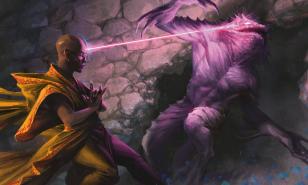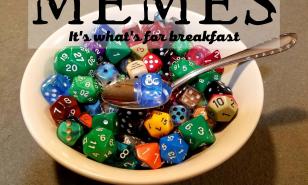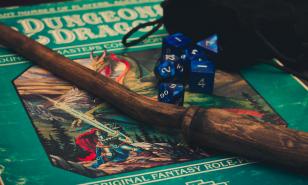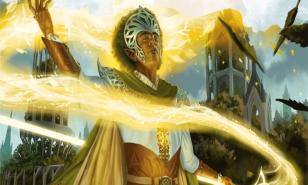[Top 20] D&D: Greatest Legendary Weapons

One of the most important parts of Dungeons & Dragons is the looting. Players long for that tasty sense of reward after a successful dungeon crawl or boss fight. And there is no better reward for an adventurer than a truly legendary weapon they can add to their arsenal.
A good weapon is one that people will remember long after their adventure has ended. I’m not talking about +3 Longswords, no matter how rare they might be. I’m talking about weapons that float around you and fight on their own, ignite with frost, or turn into lightning when thrown.
D&D has plenty of lore and stories behind a lot of their weapons, but I encourage you to create your own stories. And these are just a few weapons with unique effects that will help you do just that. These weapons should evolve into legendary tales told around your table.
20. Javelin of Lightning
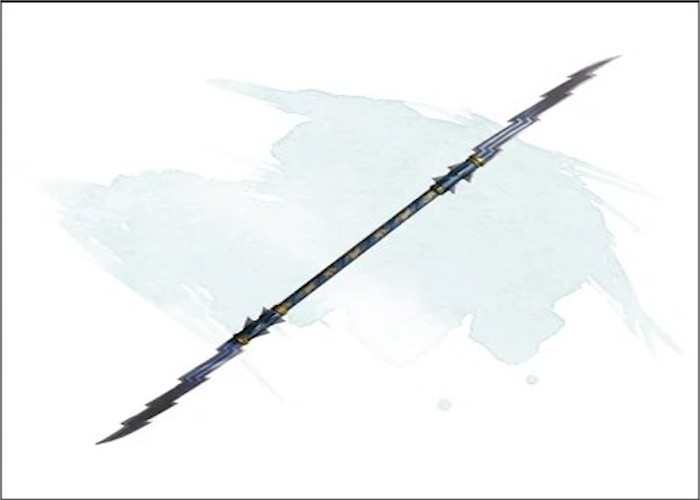
It might not look like much, but give it a throw and watch out!
A magic javelin that turns into a bolt of lightning when you throw it and scream something (preferably something menacing). While it can only do this once per day, it deals a serious load of damage. And even if it misses, it still does a good chunk of damage to every creature between you and your target.
This could be a boon from the actual God of Thunder, a lightning bolt magically encased in a spear, or maybe this is what would’ve happened if Ben Franklin had discovered electricity using a spear.
Javelin of Lightning Details:
- Does not require attunement.
- Each creature between you and your target makes a Dexterity Saving Throw, taking 4d6 lightning damage on a failure.
- On a hit, your target takes an extra 4d6 lightning damage.
Why The Javelin of Lightning Is Awesome:
- It’s the first step on an adventurer’s path to becoming the God of Thunder.
- Line up your enemies in a hallway and watch them fall.
- Even though it can only be thrown as lightning once per day, it’s still considered magical for overcoming resistances.
19. Dwarven Thrower
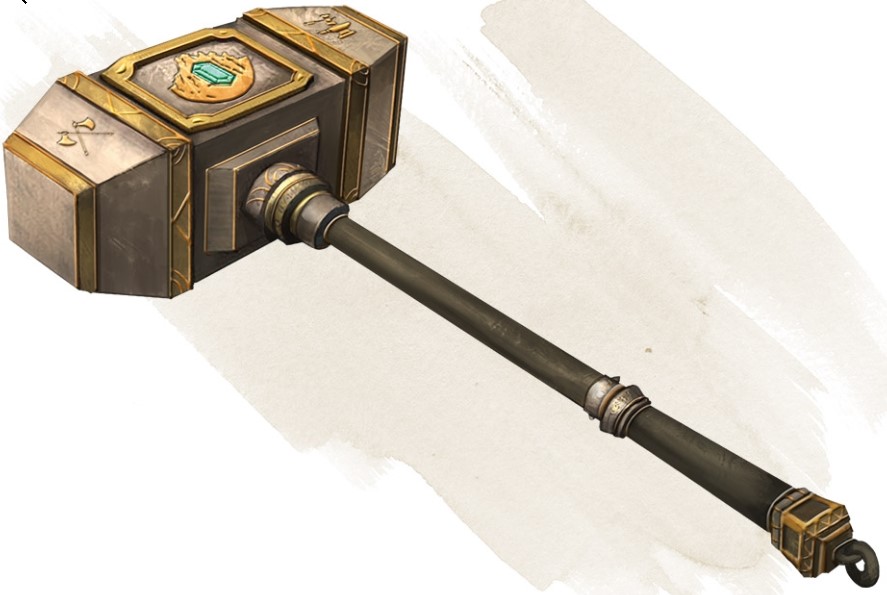
Dwaven made, so you can hit those faraway things without having to get out of your seat.
And now we bring you to the second step of becoming Thor: a warhammer that returns to you when you throw it. Being able to throw a hammer as far as 60 feet is already pretty impressive, but when it comes flying back into your hand with a woosh, you’ll be in love.
Traditionally, the Thrower was created by the Dwarves and made to deal more damage to Giants. But maybe in your universe this hammer is possessed by the spirit of a puppy that loves playing fetch. Or maybe it’s something to do with magnets and however they work.
Dwarven Thrower Details:
- Requires attunement by a Dwarf (but as a GM, you can loosen that restriction).
- Has a +3 bonus to attack and damage rolls, and deals an extra 1d8 damage. Or 2d8 to giants.
- Has the thrown property with a normal range of 20 feet and a long range of 60. After the attack, the hammer flies back to your hand.
Why The Dwarven Thrower Is Awesome:
- With this and the Javelin of Lightning, you’re officially on the path to becoming the Avatar of the God of Thunder.
- 20 feet might not seem like much, but it really makes the difference for traditionally melee fighters when they’re up against a flying foe.
- There’s nothing much like throwing the same weapon over and over again on the same turn. Makes you feel like you’re breaking the rules in a fun way.
18. Defender
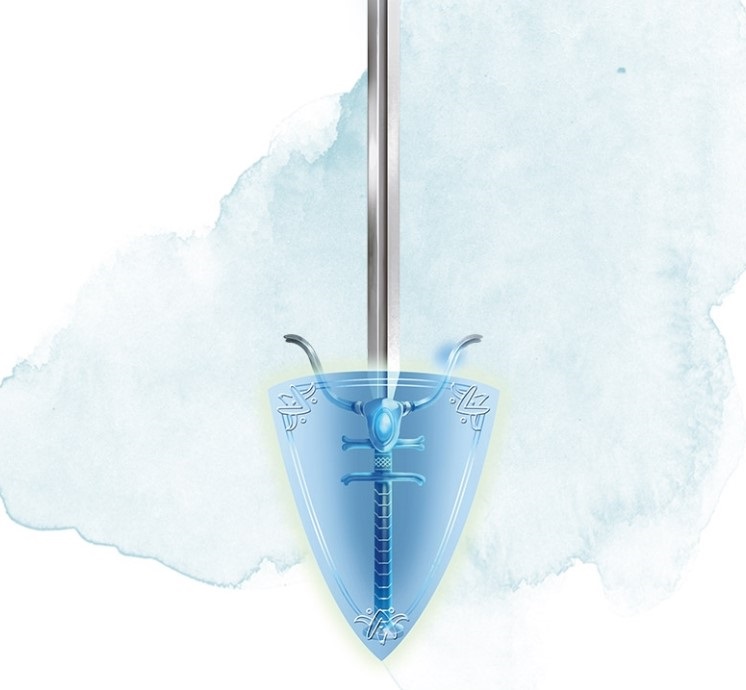
Traditionally in D&D, if you've got the blue aura of a shield about you, you're gonna be harder to hit. That's just science.
The Defender is a classic blade of legend with a very unique property. It can turn it’s bonus to attack into bonuses for defense. On your turn you can decide whether you’d like to improve your odds for dealing damage or avoiding damage.
Sure, it looks like it has a glowy shield on it, but maybe your version of the Defender looks different. Maybe it’s a shield that’s been turned into a weapon, but still retains some of its defensive qualities. Maybe it’s collapsable, and can actually extend out into a defensive wall to block enemy attacks. Maybe it’s just so freaking big that you can easily put it between you and anyone trying to hurt you.
Defender Details:
- Can be any kind of sword, large or small, but requires attunement.
- Has a +3 bonus to attack and damage rolls.
- Before you attack on your turn, you can take that bonus or part of that bonus and put it toward your Armor Class.
Why The Defender Is Awesome:
- When you’re facing down a mighty boss, there’s nothing you want more than an occasional boost to your AC.
- Most people might think of a Defender as a Longsword or a Greatsword, but I love the idea of being creative and making it a Shortsword or Rapier or something interesting.
- There’s nothing more embarrassing for a tank than stepping in front of your party and then getting hit by every attack. This should hopefully make those big hero moments more epic.
17. Berserker Axe

Take this axe and let the rage take you. What's the worst that can happen?
An axe that thirsts for combat and causes you to as well. While improving the hits you dole out and the damage you can take, this axe also has one serious quirk to keep in mind: it’s cursed. Whenever a hostile creature damages you while this axe is in your possession, you have a chance of going berserk and being unable to do anything but attack until there are no more creatures in your immediate vicinity. Friend or foe.
Yes, that seems like a downside, but imagine the party’s surprise the first time this happens. And then imagine the little quest they’ll have to go on to remove the axe’s curse from the wielder. Curses can just be an opportunity for story.
Berserker Axe Details:
- Requires Attunement, and once attuned, can’t be unattuned.
- You gain a +1 bonus to attack and damage rolls. And extra headpoints equal to your level.
- Attacks with other weapons have disadvantage, unless you have no foes around you.
- When you’re attacked by a hostile creature, make a DC 15 Wisdom save or go Berserk. Using your entire turn to attack the nearest creature, until there’s no more creatures within 60 feet of you.
Why The Berserker Axe Is Awesome:
- Throwing your party into an easy encounter, and then revealing that the real encounter was their cursed ally is just a great reveal.
- The quest to remove this curse can be an epic one, where they need to keep the cursed adventurer from getting hit, or it could be one where they throw the Berserker into battle and stay far away until they’re done.
- After finally purifying the axe, they’ll have earned an awesome uncursed weapon. Maybe even transform it into a more powerful version of itself or a different axe entirely to reward them for a quest well done.
16. Bag of Holding

It may look friendly now, but be careful around it with sharp knives or claws of any kind. You don't wanna lose a hand, do you?
Alright, I know what you’re thinking, “That’s not a weapon! That’s a bag!” You’re right, until you’re not. The Bag of Holding is one of my favorite last ditch weapons in an adventurer’s arsenal. I have heard stories of it destroying Avatars of Gods, decapitating vampires, and suffocating goblins.
When a Bag of holding is ripped, torn, or pierced it ruptures and is destroyed. It’s contents are scattered into the Astral Realm, which is usually a horrible thing for an adventuring party. But imagine that you had opened it up and put the bag onto the big bad evil guy’s head just as your rogue threw a dagger at it. What happens to that head?
Bag of Holding Details:
- Doesn’t Require Attunement.
- If pierced, overloaded, or torn, the bag ruptures and sends all its contents to the Astral Realm.
- Placing a Bag of Holding inside another extradimensional space instantly destroys both items and opens a gate to the Astral Plane, sucking in any creatures within 10 feet and transporting them to a random location in the Astral Plane.
Why The Bag of Holding Is Awesome:
- While it shouldn’t be a go to weapon, it’s a great ace to have up your sleeve if things are looking grim. If the cost of saving the world is all of your items, then so be it.
- Sending the big bad guy into the Astral Realm could finish him off for good, or it could make him come back changed and stronger than before.
- While some GMs might think of this as cheating or completely avoiding an encounter they worked hard on, I think this is a creative and risky solution. And it’s still not exactly easy to bag an evil guy’s head.
15. Flame Tongue
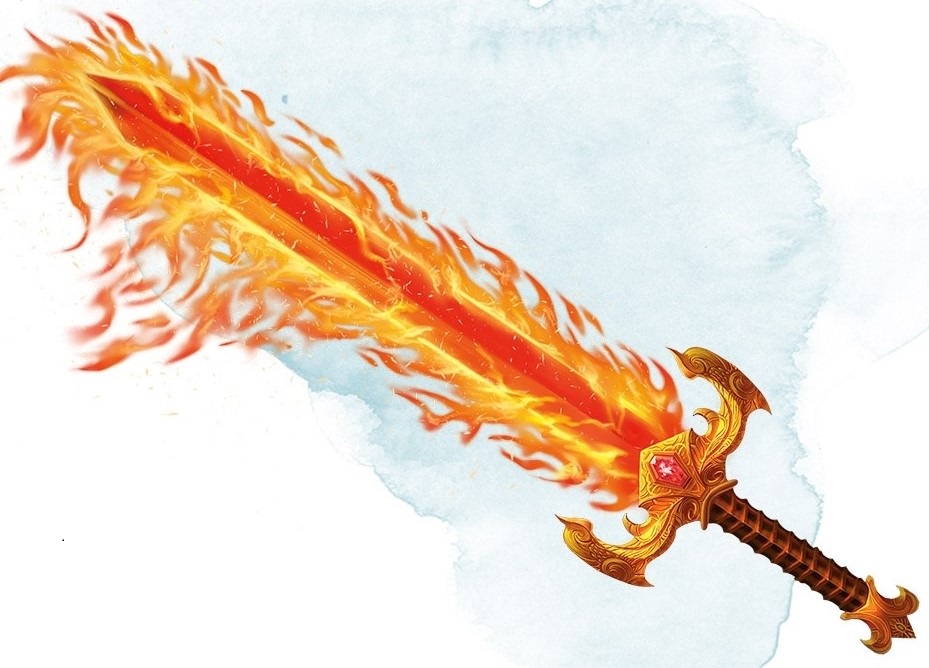
No one likes being stabbed. Especially not by the red hot blade of a burning sword.
This flaming blade is the perfect companion for any sword wielder looking for a way to seem like a badass. There is nothing more intimidating than rushing toward your foes with a burning sword.
The fire deals extra damage while the sword is alight, and lights up space in a decent radius. You’ll never need a torch again. And personally, I think the proper use of this blade should add a decent bonus to a good intimidation check.
Flame Tongue Details:
- Requires Attunement.
- Flames erupt from the blade with a bonus action by speaking the command word.
- Sheds bright light in a 40 foot radius, and dim light for an additional 40 feet.
- While ablaze, the sword deals an extra 2d6 fire damage.
Why The Flame Tongue Is Awesome:
- A flaming sword is just a classic item on an adventurer’s wishlist.
- You can make any sword a Flame Tongue, so if you don’t have any sword wielders in your party, you can be creative and make a Flame Tongue Dagger, or maybe even a Flame Tongue Glaive.
- If you want to make a foe even more intimidating, give them one of these. Not only will it make them a force to be reckoned with, it’ll also offer a nice reward for the party if they achieve victory.
14. Frost Brand
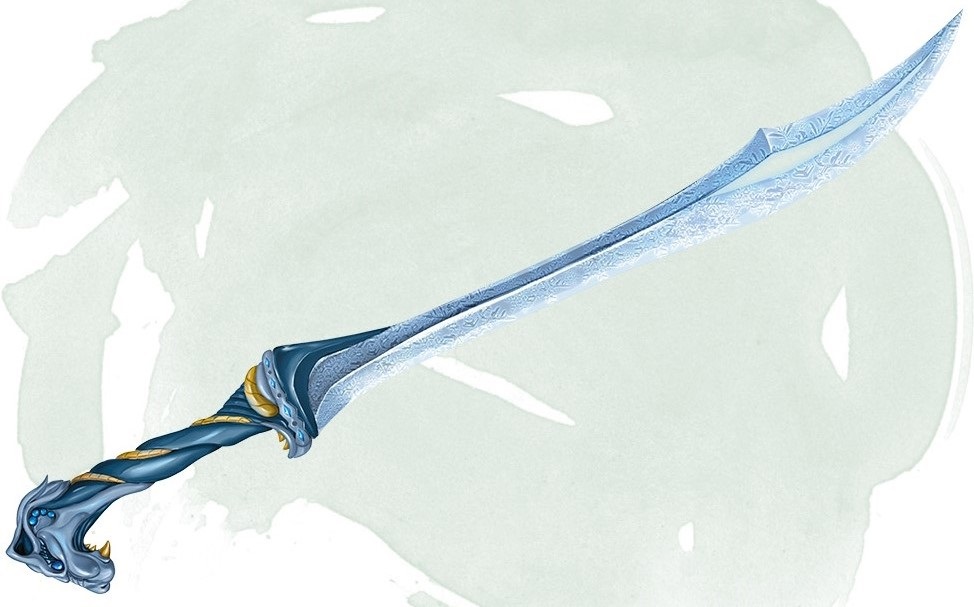
At least a burning blade will cauterize the wound. This bad boy will bleed you and then give you frostbite.
While a flaming sword is one of the more obvious signs of a badass adventurer, a freezing sword is a little more lowkey. This cool guy doesn’t hit as hard, but it also offers resistance to fire damage. And when you draw this weapon, it can extinguish all non magical flames within 30 feet. Very cinematic.
While the Frost Brand is usually less obvious than the Flame Tongue, it doesn’t necessarily have to be. You could make your Frost Brand erupt in a thick sheet of ice when it’s drawn. Or you could have it exude a thick veil of mist when wielded in high heat. Of course you could just stick to the classic blue blade that’s freezing cold to the touch.
Frost Brand Details:
- Requires Attunement.
- Deals an extra d6 of cold damage and grants resistance to fire damage.
- In freezing temperatures, the blade lets off bright light in a 10 food radius and dim light in an additional 10 feet.
- Once per hour you can extinguish all non magical flames within 30 feet of you by drawing the blade.
Why The Frost Brand Is Awesome:
- Fire may be hot, but ice is cool.
- Extinguishing flames is a very useful skill for more than just cinematic moments in combat. Could definitely come in handy during stealth missions. Or just for goofing around at a tavern.
- A lot of baddies deal some sort of fire damage. Demons, dragons, arsonists, people with Flame Tongues. Anything that gives you some added resistance is most welcome when fighting these foes.
13. Necklace of Fireballs
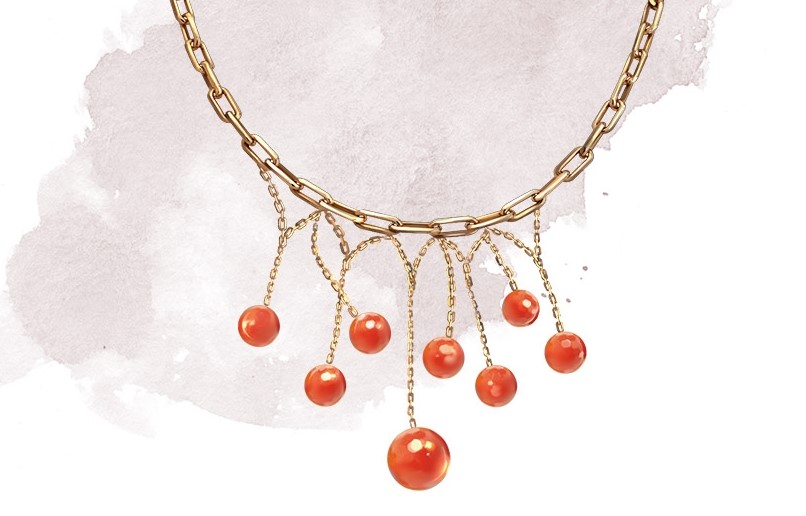
The question is, do you want to blow something up enough to lose this accesory that totally completes your outfit?
And we’re back to the fire. The necklace of Fireballs is a very dangerous piece of jewelry that you really need to be careful handling if you don’t want it exploding in your face.
Each necklace has a handful of beads hanging from it. You can use an action to throw one or more of these beads up to 60 feet away and wherever the bead lands, a fireball spell will trigger.
There are plenty of ways to make this lovely necklace your own. Maybe fire isn’t your thing, you could instead make it a Necklace of Iceballs that deals cold damage instead. Or maybe add a chance of the player whiffing the bead and throwing it way further or in the wrong direction when tossed.
Necklace of Fireballs Details:
- Doesn’t require Attunement.
- Each Necklace has 1d6+3 beads hanging from it.
- You can hurl multiple beads or even the whole necklace to increase the spell level of the fireball by one per bead beyond the first.
Why The Necklace of Fireballs Is Awesome:
- Fireball is a favorite spell of all wizards and sorcerers, and this lovely necklace lets non magical classes experience that fun for themselves.
- Have a big bad on their last legs and desperate? You could have them rush for this necklace and try to pull off all the beads. One suicidal attempt to take at least one of the party with them. It would be one hell of a way to go, or an awesome explosion to walk away from.
- Since there are a limited number of beads, you have to be a little conservative with their uses. You could use them to clear out a bunch of fodder, or you could save them all for the big bad.
12. Hammer of Thunderbolts

Swing well and this snarling face could be the last one your enemies see.
As you might have guessed by the name, this is the next step toward being an unstoppable Thunder God. This lovely, angry looking hammer is a little more complicated than the Javelin or Thrower.
In order to attune to it and use it’s full power you need to wear a Belt of Giant Strength and Gauntlets of Ogre Power. Both of these items set your strength to near or past 20. And by adding this hammer to the mix, you increase it again by 4 to a max of 30. Plus you’d have a chance to instantly kill any giant you hit with it.
The hammer also has 5 charges you can utilize while attuned to it. You can spend a charge and make a ranged attack, causing a thunderclap to erupt if it hits. The target and every creature within 30 feet must make a constitution saving throw or be stunned until the next turn.
Hammer of Thunderbolts Details:
- Without Attunement it still acts as a +1 Magic Weapon.
- Requires a Belt of Giant Strength and Gauntlets of Ogre Power to attune (though a GM could always make an exception).
- While Attuned, grants +4 to your strength score to a max of 30, and causes Giants to make a DC 17 strength save when hit with a natural 20, dying on a failure.
- Can expend one of the five charges while attuned to be thrown at an enemy, causing a Thunderclap to stun all creatures within 30 feet, if they fail a DC 17 constitution saving throw.
Why The Hammer of Thunderbolts Is Awesome:
- Wielding this weapon takes a lot of work. This is the kind of weapon you work your way up to. You can go on a quest to obtain all the items in this set and then reward them with this new strength.
- With the Hammer of Thunderbolts at full strength in the party, your party will be able to tackle massive obstacles. Such as Giants.
- It might seem a little scary to provide one player with so many strength enhancing items, but it won’t break your game as much as you might think. Just because they hit hard, doesn’t mean you can’t hit back. This isn’t the only hard hitting magical item in the world.
11. Dancing Sword
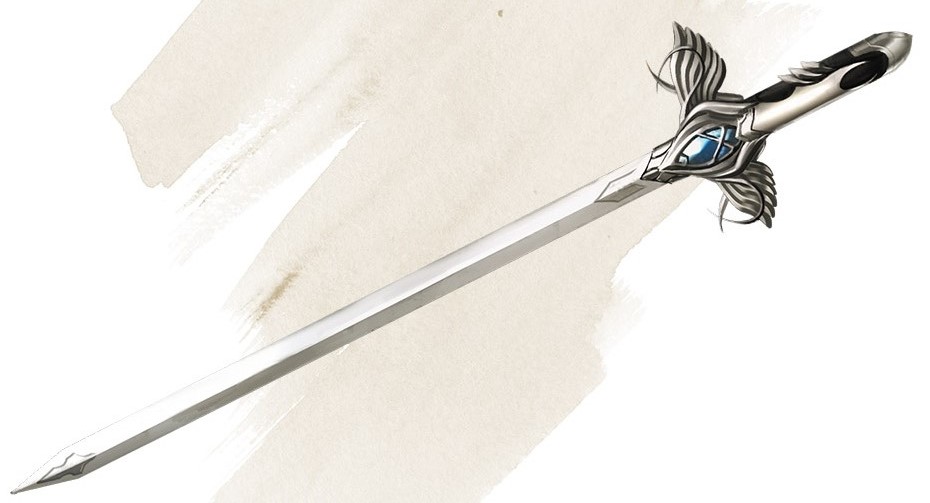
Little known fact: this Dancing Sword's favorite video game is Dance Dance Revolution 2. Unfortunately, it can't play with the dancepad.
You ever been fighting on your own and wished you had a buddy? You ever seen a Cleric fighting with their Spiritual weapon and been jealous? You ever wish you had something else to do with your bonus action? Well do I have the flying sword for you!
The Dancing Sword is basically a floating friend using your bonus action to attack for you. It hovers within 30 feet of you and can fly 30 feet and attack with the same bonus action. After it makes its fourth attack it flies back to your hand, or as close as it can get, but you can just toss it right back into the air on your next turn.
Dancing Sword Details:
- Requires Attunement.
- You can use a bonus action to cause the sword to fly up to 30 feet and attack one creature, using your attack roll and adding your ability score modifier to the damage.
- Has to stay within 30 feet of you, and can move 30 feet and attack with a single bonus action.
- After 4 attacks, flies back to your hand, or falls if it can't reach you.
Why The Dancing Sword Is Awesome:
- This is the perfect weapon if you’ve already got a sword you love but want to wield a second (or third if you have dual wielding) without any penalties.
- Not great for classes like bards who have tons of stuff to do with their bonus action. Give it to a Fighter or Barbarian though and they’ll always get an extra attack to utilize.
- A dancing sword is perfect for those moments when you’re outnumbered. Finally take on two opponents at once with the handy dandy Dancing Sword!
10. Iron Bands of Bilarro

You'll never look at a rubberband ball the same way again if you're ever caught up in one of these things.
Not all weapons have to kill. Sometimes the goal is to capture. That’s when you bring out this guy. While only appearing to be an iron sphere about 3 inches in diameter and weighing only a pound, you can actually throw it at a huge or smaller creature and it will open up into a tangle of metal bands.
These metal bands will wrap around your target and restrain them. The only chance they have to get out is a strength check, and if they fail, they can’t make any more attempts for 24 hours. However, if they succeed, then you can say goodbye to your magical iron band ball.
Iron Bands of Bilarro Details:
- Doesn’t Require Attunement.
- You can use an action to throw the sphere at a huge or smaller creature within 60 feet. Make a ranged attack using your Dexterity modifier plus your proficiency, restraining your target on a hit.
- A creature can use an action to make a DC 20 Strength check to break the bands. On a success the item is destroyed and the restrained creature is free. But if they fail, that creature automatically fails any further checks for the next 24 hours.
Why The Iron Bands of Bilarro Are Awesome:
- Perfect when you need some answers from the bandits or cultists you’re fighting.You can capture them without any worry that they’ll escape as long as they fail that first check.
- It works perfectly until that captured creature rolls too high. And then your party will face that moment of mourning, as if they’ve lost a good friend.
- With a DC of 20, you don’t have to worry about most creatures breaking out. You just might want to watch out for really strong things like demons, body builders, or people who have attuned to the Hammer of Thunderbolts.
9. Apparatus of Kwalish
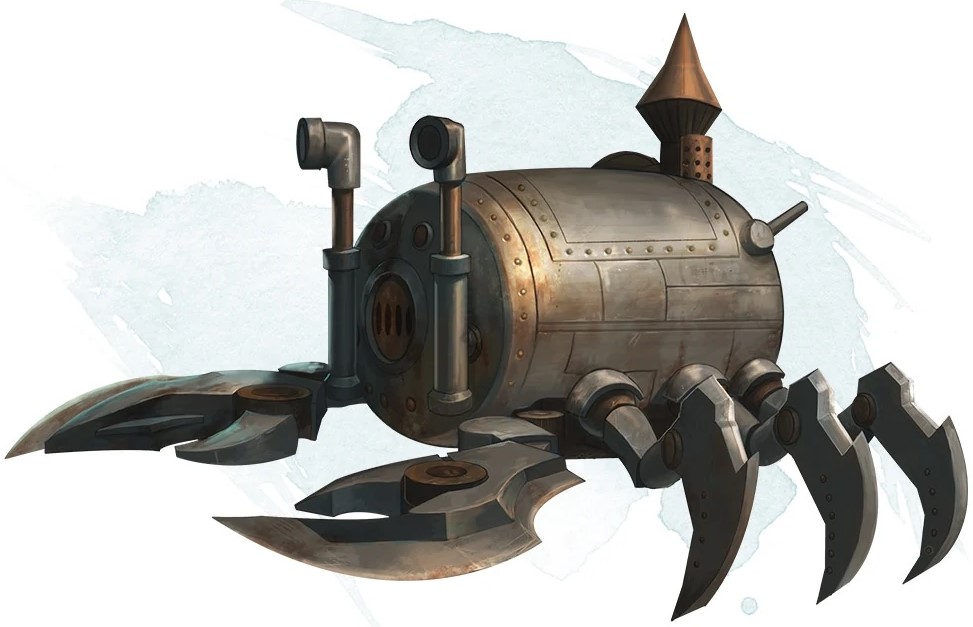
What color Power Ranger do you think would have the Lobster Mech? Judging by the look of this thing, I'm thinking it would have to be the Brown Ranger.
This is the closest thing you’re gonna find to a high fantasy mech. This lobster tank is not the kind you pick your shellfish dinner from. Up to two creatures can crawl into this 500 pound iron barrel and find ten levers inside that they can use to control this mechanical monster.
It’s airtight and watertight and can float on water or dive to a depth of 900 feet, it can grab foes in its metal claws, and it can take a beating with an 200 hit points and an AC of 20. And with 10 hours of breathing air inside, this apparatus makes a nice little hiding place if you need to rest for a bit.
Apparatus of Kwalish Details:
- Doesn’t Require Attunement.
- Has a hidden catch you need to find with a DC 20 investigation check.
- Has 10 levers inside that do a multitude of things, all described on its own special table.
Why The Apparatus of Kwalish Is Awesome:
- This large metal lobster might not be super fast, but it is sturdy. It’s the perfect place to hide your squishy magic casters in a tough fight.
- You’re either going to be always traveling around in this thing, or you’re going to need someone really strong to carry it around. Either way, you’ll have a conversation starter.
- If you have to go somewhere the Apparatus of Kwalish won’t fit, you can be pretty confident that it’ll be safe to leave behind in its barrel form. Unless some enterprising thief comes by and rolls a really high investigation. Then you’ll have the startings of a fun quest to retrieve your lobster.
8. Nine Lives Stealer

I know it looks a little like a goth accessory, but this sword means serious buisness.
That name should be enough to sell you on this sword. It perfectly describes what you’re gonna get with this deadly weapon. Not only does it get a bonus to attack and damage, but it also has a chance of outright killing any creature with few enough hit points when it scores a critical hit. But it can only do this so many times before it loses this property.
Why does this sword have such an affinity for ending life? And what happens when this blade uses up its last life ending charge? Maybe it was forged using water from the River Styx and once it slays enough creatures a doorway to the underworld will open. Or maybe a lich had commissioned it just before he was slain, and upon filling it with enough souls the lich will come back to reward the adventurer who brought them back. Or maybe it’s just a sword and the wielder finds out the power was within them all along.
Nine Lives Stealer Details:
- Requires Attunement.
- Has 1d8+1 charges. If you score a critical hit against a creature with fewer than 100 hit points they must succeed on a DC 15 Constitution Saving Throw or be slain as the sword severs its lifeforce from its body. Nine Lives Stealer only loses a charge if the creature is slain.
- When the sword has used its last charge, it becomes a simple +2 Magic Weapon. Or, maybe something else happens depending on the creative mind of a GM.
Why The Nine Lives Stealer Is Awesome:
- Unless your party is really high level, most creatures don’t have over a hundred hit points, so a critical hit with this weapon would mean instant death for most baddies.
- Because of that very reason though, this might be the kind of weapon you only bring out to impress the in laws and kill a big scary boss.
- You could just let this blade lose any interesting abilities after all its charges are used up. But it provides an opening to make this life stealing journey lead to a reward or adventure for the party to tackle together.
7. Luck Blade
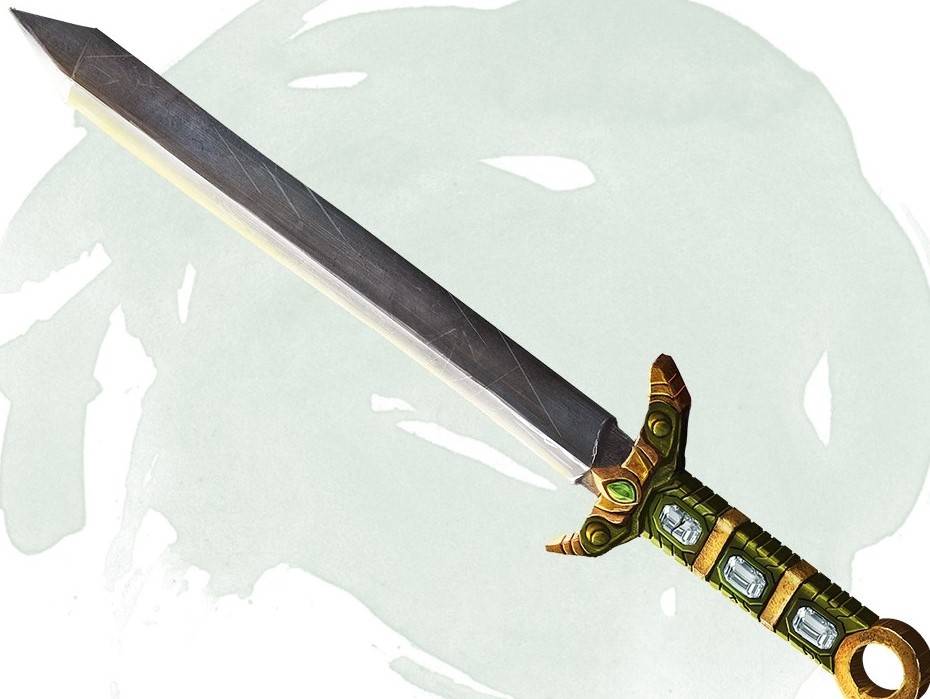
If you've happened upon this blade, I'd say you've already got pretty good luck.
This blade may be lucky, but that’s not the only trick it has up its sleeve. Sure, this weapon gives you a small bonus to attack and damage, as well as a boost to saving throws, but there’s more.
Once a day you can reroll any attack roll, saving throw, or ability check and must pick the new roll. That’s a pretty handy ability for sure. But I know what you’re thinking, “There’s got to be more, right?” There is!
The thing that makes the Luck Blade so legendary is the fact that it grants a limited number of wishes. That’s right, carefully-worded, whatever-you-desire, no-wishing-for-more-wishes, wishes!
Luck Blade Details:
- Requires Attunement.
- Has a +1 Bonus to attack and damage rolls, as well as saving throws.
- While the sword is on your person you can freely use its luck to reroll any attack roll, saving throw, or ability check once per day. You have to use the new roll.
- The Luck Blade has 1d4-1 charges of the Wish spell. You can use an action to use one of these charges and make a wish.
Why The Luck Blade Is Awesome:
- A +1 to saving throws might seem like a small thing, but the number of times it comes in handy might surprise you. You’ll be glad you have this blade there to save you from fireballs, pitfalls, and poison.
- The Luck Blade’s Luck may not seem too amazing compared to the Luck feat or Halfling Luck, but it does have one specific difference. You can use the daily luck for any roll. Doesn’t have to be yours, doesn’t even have to be targeting you.
- Wishes can be scary. They can break the game if you’re not careful. I once had a session turn into two hours of arguing about the morality of wishing for the world to be a better place. But that was a wonderful time that we still joke about. It’s all part of the adventure.
6. Oathbow
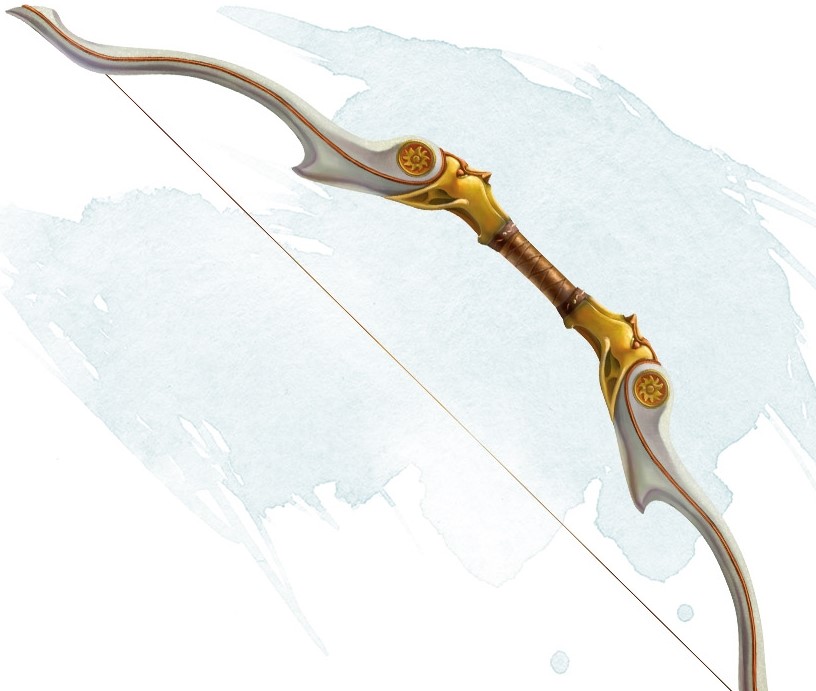
"I swear, if you don't let me in the VIP section of this exclusive club, I will name you as my nemesis and hunt you to the ends of the earth."
Take an oath and swear to end your enemies with this bow. By whispering a specific phrase, you can mark one target as your sworn enemy. This bow will remember that, and for the next week, or until your enemy is dead, all attacks on that enemy have advantage, they gain no bonuses from cover that isn’t total cover, and you suffer no disadvantages due to long range.
And when your attack hits---and it probably will hit---you’ll deal a heaping helping of extra damage to that nemesis of yours. This is the perfect weapon to help put an end to any reoccuring foes you’d rather never show up again.
Oathbow Details:
- Requires Attunement.
- While targeting a foe, you can speak the command phrase, “Swift death to you who have wronged me.” Your target becomes your one sworn enemy for the next seven days or until their death.
- When you make a ranged attack with this bow against your sworn enemy, you have advantage on the roll, your target gains no benefit from anything less than total cover, and you don’t suffer disadvantage from shooting from long range. If the attack hits it deals an extra 3d6 damage.
- While your sworn enemy lives, all attack rolls with other weapons have disadvantage.
Why The Oathbow Is Awesome:
- This bow will really teach your party about the meaning of the word nemesis. Not every target is worthy of becoming your sworn enemy. The slaver holding your family hostage? Yes. The baker that overcooked your buns? Probably not.
- Nothing makes a party go after the big bad harder than actually labeling them as a sworn enemy. You can introduce the bad guy to your party, but there’s always a chance they’ll decide to ignore them and continue on to the next town. But a sworn enemy is getting what’s coming to them.
- And if the party ends up making someone else their target of ire, then at least the GM knows what to plan for the next session. Or they can come up with a whole evil baker themed dungeon on the spot.
5. Ring of Shooting Stars
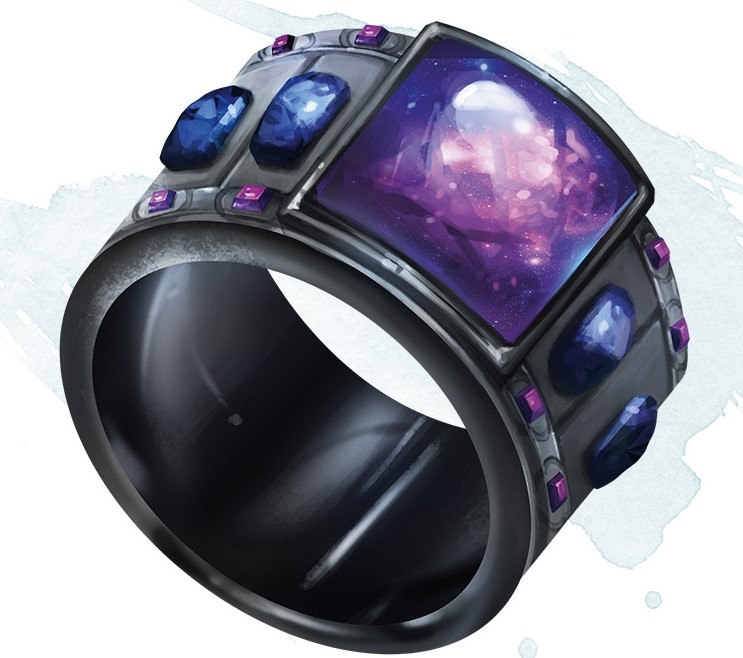
Stars or not, that's a good looking ring. You've just got to appreciate a nice purple accessory. It's the royal color after all.
It should be common knowledge that rings in D&D are capable of some amazing things. The Ring of Shooting Stars gives you the power of the cosmos at your fingertips. Seriously, this ring can do so many things, I’m not entirely sure where to start.
At will, you can cast the cantrips Dancing Light and Light using the ring. You can use one charge to cast Faerie Fire and illuminate all your foes. Two charges will create one to four balls of lightning in your immediate area, hurting anything that comes in contact with them for the next minute. And using 1 to 3 charges will allow you to shoot stars from your finger that shower your target in sparks of light.
This ring turns you into a star spangled weapon.
Ring of Shooting Stars Details:
- Requires Attunement while outdoors at night. Has 6 charges and regains 1d6 charges daily at dawn.
- Can cast Dancing Lights and Light at will. And Faerie Fire using 1 charge.
- Expend 2 charges to create up to four balls of lightning. You can move them 30 feet as a bonus action and when they come within 30 feet of a creature, that creature must make a Dexterity Saving Throw or take damage determined by how many balls are out.
- With 1 to 3 charges you shoot an equal number of motes of light at a point you can see within 60 feet of you. Each creature within a 15 foot cube originating from that point must make a Dexterity Save or take 5d4 fire damage, or half as much on a success.
Why The Ring of Shooting Stars Is Awesome:
- This ring lets you do some very unique things that there aren’t even really spells for. Sure, it has Faerie Fire and Light cantrips, but shooting flaming stars at people will be something only the owner of this ring could do.
- The ring requiring attunement at night and outdoors really opens up some opportunities for GM shenanigans. What happens when they attune to this ring under the stars? Does some Lord of the Cosmos reach out to them and give them a task in exchange for this power? Are they filled with a celestial light? Do stars start falling all around them?
- Filling a room with balls of lightning and sparking stars can basically keep any swarm of baddies busy around you. This is the perfect ring for crowd control when the Dragon’s minions come out to play.
4. Sun Blade

Keep the high ground and always remember, "Only a Lich deals in absolutes."
The Sun Blade is what you bring in when you’ve watched too much Star Wars and want to bring the high fantasy equivalent of a lightsaber into your world. This blade of sunlight appears to be an ordinary sword hilt at first, but upon attuning to it and using a bonus action you can swoosh a beam of sunlight into existence.
This longsword has the finesse property and even if you’re only proficient with a shortsword, you can still use this blade without a problem. It has a bonus to attack and damage, but it actually deals radiant damage instead of slashing. On top of dealing extra damage to undead nasties, this blade also illuminates the area in a radius from 10 to 30 feet.
Sun Blade Details:
- Requires Attunement. Has the finesse property. Additionally, players with proficiency in shortswords have proficiency with the Sun Blade.
- Deals Radiant Damage. Has a +2 bonus to attack and damage rolls with this weapon. Additionally deals an extra 1d8 of radiant damage to undead.
- The luminous blade emits bright light in a 15 foot radius and dim light an additional 15 feet. You can use your action to expand or retract this light in 5 foot increments. As small as 10 feet each, to as large as 30 feet each.
Why The Sun Blade Is Awesome:
- It’s a Lightsaber. That’s really all you need to hear.
- Ever need to sneak a weapon into a party or social gathering? No one is going to make you leave your hilt at the door.
- This sword is tempting for anyone, but because it can be used by folks who aren’t proficient in martial melee weapons, it can actually be used by a lot of different classes too. Monks, Rogues, and Clerics can all throw their hat into the ring to wield the awesome power of the Lightsa—I mean Sun Blade.
3. Tentacle Rod
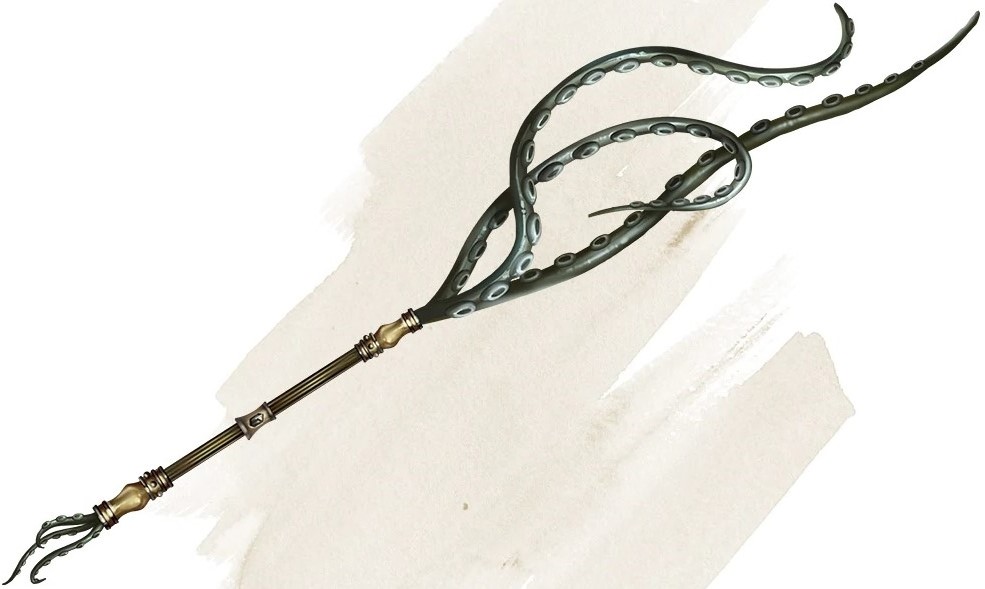
C’thulhu is coming and he wants a handshake!
This rubbery rod is more than just a bad experience with calamari. The three tentacles that make up this rod can each attack a creature within 15 feet of you. And if all three of them hit the same creature, that creature will be slowed as long as it keeps failing its Constitution Saves.
This is the perfect weapon for a Warlock looking to let out their extra creepy side. But maybe no one in the party wants to be an eldritch octopus. Nothing stopping you from glittering it up and bedazzling it a little to make it more appealing. You could call it a Glittering Streamer Rod instead. Though maybe when they accidentally wash the glitter off they find they’ve been using the power of C’thulhu all this time!
Oh, the eldritch horror!
Tentacle Rod Details:
- Requires Attunement.
- You can use an action to direct each tentacle to attack a creature within 15 feet of you. Each tentacle makes an attack roll with a +9 bonus to hit.
- They deal 1d6 bludgeoning damage, and if they all hit the same target they must make a DC 15 Constitution Save. On a failure they suffer all the same effects of the Slow spell, and at the end of its turns it can repeat the save.
Why The Tentacle Rod Is Awesome:
- Tentacles are cool. Whether this rod is in the hands of an evil eldritch being or in the hands of your party, this rod is capable of doing some fun things.
- It’s more than just a reach extender, but if that goblin is just 10 feet too far to hit it with your axe, that’s when you’ll be happy to have this rod with it’s amazing 15 foot reach.
- Slowing down your opponent is amazing. Even if just for a turn. This rod will come in clutch when it keeps the big bad from taking that opportunity attack or casting Shield to avoid a massive hit.
2. Sphere of Annihilation

The void calls to you, beckons you, draws you in. What could be lying in wait on the other side of this sphere? Something wonderful, something horrible, nothing at all?
This sphere is one of the most dangerous things you can encounter. And if you’re willing to risk it all, you could take control of this absence of space and turn it against your enemies.
A Sphere of Annihilation is more often than not the focus of an evil being’s plans for world domination or destruction. Most encounters with a sphere like this will be right in the middle of the party and whoever they’ve chased into some long forgotten ruin.
A Sphere of Annihilation obliterates all matter that moves through it. What a lot of people don’t immediately think about is wrestling control of this spear from the big bad and using it against them. It’s not an easy move, but it can pay off in big ways if you succeed.
Sphere of Annihilation Details:
- A 2 foot diameter hole in the multiverse that obliterates any matter that comes in contact with it.
- One can make a DC 25 Arcana check to control the sphere. If you fail it comes closer to you, if you succeed you can move it as you like determined by your intelligence modifier.
- If the sphere comes in contact with a planar portal or an extradimensional space a number of things could happen. The sphere could be destroyed, it could pass through without issue, or it could cause a spatial rift that transports all creatures and objects within 180 feet, including the sphere, to a random plane of existence.
Why The Sphere of Annihilation Is Awesome:
- The Sphere of Annihilation is not usually intended for the party to have control of. And that's one of the things that make it so interesting. A lot of it will be on the DM to decide what exactly happens with it. It could deal a heaping amount of damage to creatures it comes into contact with, or maybe it just sucks them up. Dealer’s choice really.
- There is a tremendous amount of power that comes with this sphere. Sure, it could be used to just throw away anything you don’t like, but clearly there are a number of rituals and things that make bad guys interested in it. Maybe the party has some dark dealings they long for, or maybe they have to keep someone from taking the sphere from them.
- If the worst should happen and the Sphere opens that spatial rift into a random plane of existence, well, that’s just a wonderful new quest for the party to go on. How do they get back home? And do they just leave the ball of doom in this new plane?
1. Vorpal Sword
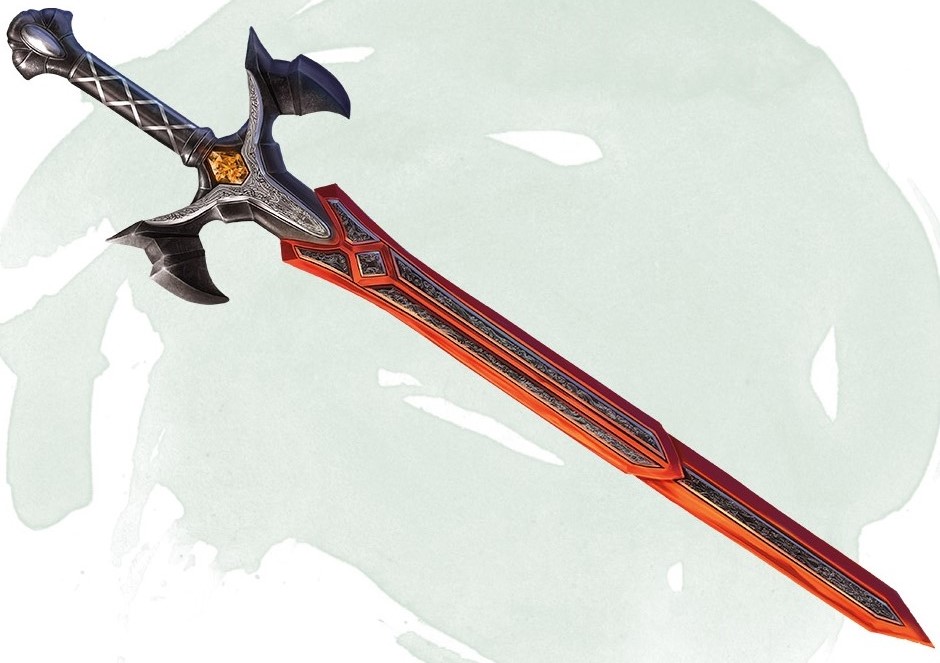
You've pulled the sword from the stone and you're ready to slay the dragon, rescue the princess, and become a celebrated hero! Or die trying. Hope the dice are in your favor.
Capable of beheading your foes with a single strike, this sword’s might is something to be feared and revered. A Vorpal Sword is the ultimate weapon for any martial adventurer. If you have this balde, you know that you’ve made it.
This is not the kind of weapon you give to a fledgling adventurer. This blade has the ability to make short work of any encounter thrown at the party. Every attack has a 5 percent chance of immediately cutting off the target’s head. That’s terrifying for most GMs with lower level parties.
But, at higher levels, the Vorpal Sword isn’t nearly as game breaking. High level parties are usually facing off against things that are immune to abilities like that, either because they have a bunch of heads, or because they just have huge heads. There’s no way any Vorpal Blade would be able to cut off the head of a gargantuan Astral Dreadnought.
But being able to dispatch a Bandit Leader, or a Blackguard Paladin with one swing of your blade, that’s the kind of power you’ll have with this blade in your hands.
Vorpal Sword Details:
- Requires Attunement.
- Has a +3 Bonus to Attack and Damage. Also ignores resistances to slashing damage.
- When you attack a creature that has at least one head and roll a 20 on the attack roll, you cut off one of the creature’s heads. It dies if it can’t survive without the lost head.
- A creature is immune to this effect if it is immune to slashing damage, doesn’t have or need a head, has legendary actions, or is determined too large to be beheaded with the blade. Instead the creature takes an extra 6d8 slashing damage.
Why The Vorpal Sword Is Awesome:
- That first time you get a critical and cut someone’s head off. There’s nothing quite like it. It’s almost scary the amount of power you’ll realize you have.
- This blade might seem gamebreaking at first, but it’s not. There are opponents that are resistant to the power of the Vorpal Sword. Anything with Legendary Actions for instance. And if you’re not throwing legendary actions at your party yet, you should hold off on giving them a blade like this.
- There are more interesting weapons in D&D for sure. But much like the Master Sword, or Excalibur, the Vorpal Sword is the sword of all swords. And when you really want to reward a party after a harrowing quest, this is the kind of thing that would keep them going.
You may also be interested in:
Image Gallery
- Log in or register to post comments
 Home
Home PC Game Trailers
PC Game Trailers News
News Menu
Menu

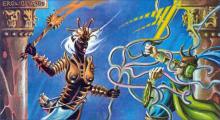
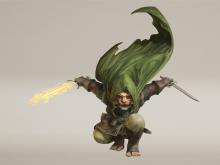

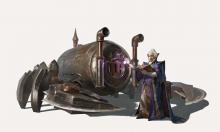


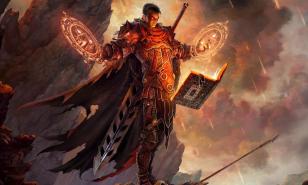
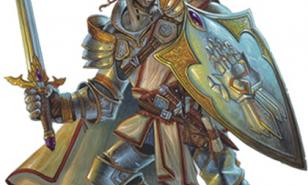


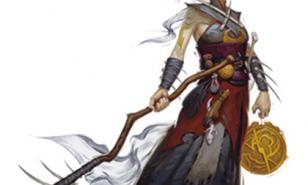
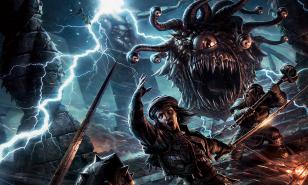
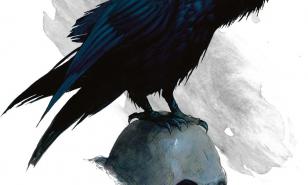
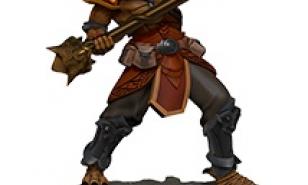

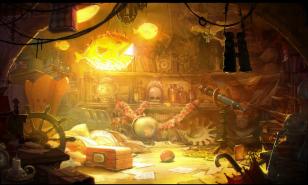

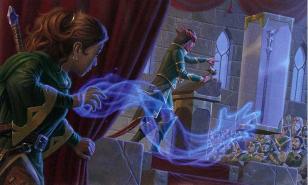
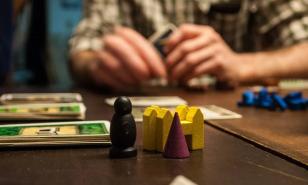



![[Top 15] D&D Best Armors, Best armors in D&D, dnd best armor best armor dnd, what armor for my character dnd, d&d best armor, d&d magic armor, best magic armor dnd, top armor dnd, top armor d&d, legendary armor dnd, dnd best legendary armor, legendary magic items, legendary magic armor, dungeons and dragons legendary armor, dungeons and dragons magic armor](https://www.gamersdecide.com/sites/default/files/styles/308x185-scale-crop--more-top-stories/public/top_legendary_armor.jpg)

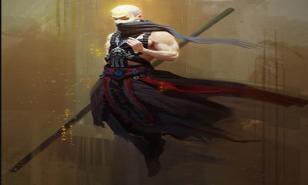


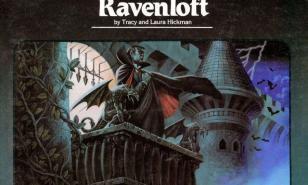


![[Top 3] D&D Best Druid Subclasses To Play](https://www.gamersdecide.com/sites/default/files/styles/308x185-scale-crop--more-top-stories/public/top_3_dd_best_druid_subclasses_to_play_1.jpg)
![[Top 10] D&D Best Wizard Weapons and Items Best wizard magic items, best magic items for wizards, best wizard items, best items for wizards, wizard items, wizard magic items, items for wizard, items for wizards, magic items for wizard, magic items for wizards, caster magic items, magic items for casters, caster items, must have items for wizards, must have magic items for wizards, magic items to pick for wizards, items to pick for wizards, magic items to pick for wizard, items to pick for wizard](https://www.gamersdecide.com/sites/default/files/styles/308x185-scale-crop--more-top-stories/public/battle_of_will.jpg)

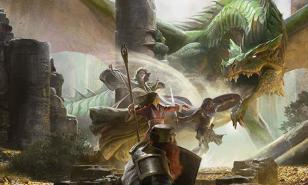
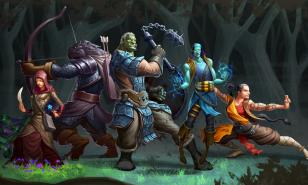



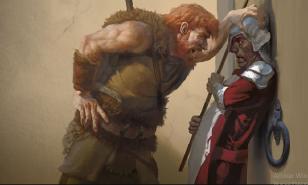




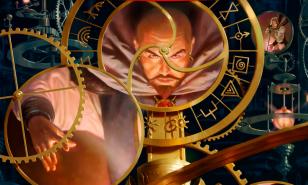
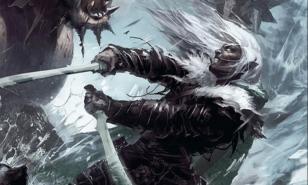
![[Top 3] D&D Best Wizard Builds of All Time d&d wizard spells,best wizard builds, best wizard build, top wizard builds, top wizard build, control wizard build, control wizard guide, divine wizard guide, nuclear wizard guide, best spells for wizards, best spells for a wizard, how to play a wizard, how to build a wizard, dnd best wizard build, dnd best wizard builds, d&d best wizard build, d&d best wizard builds, d&d wizard guide, ddivine wizard build, nuke wizard build](https://www.gamersdecide.com/sites/default/files/styles/308x185-scale-crop--more-top-stories/public/top-3-wizard-builds-4_1.jpg)

